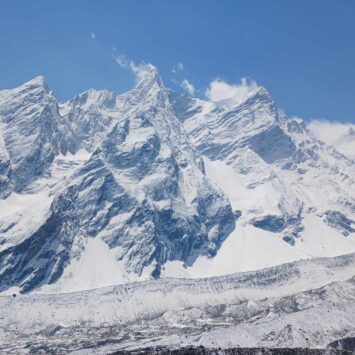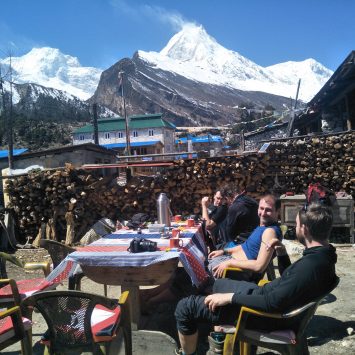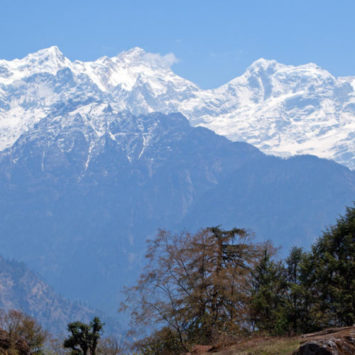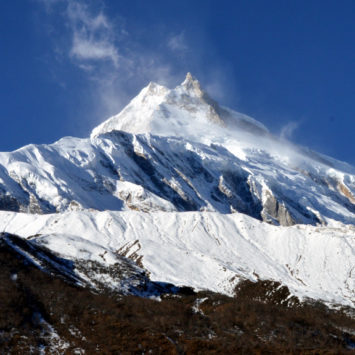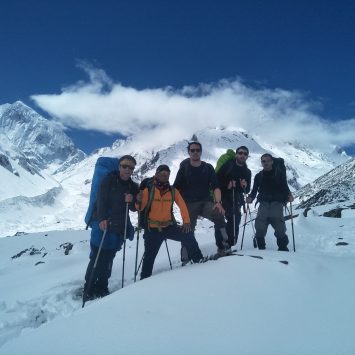Off limits to any outsider until the early 90s, the Manaslu Region in the Gorkha District in Nepal still requires a restricted area permit to enter. Once inside, this extra payment does seem justified, however.
First, it is the wildlife. Home to quite a few endangered species, including the elusive Snow Leopard, the imposing Asiatic Black Bear, and the shy Red Panda as well as the Himalayan Tahr, the Blue Sheep, and the Himalayan Musk Deer, the Manaslu Conservation Area seeks to protect slightly more than a hundred species of birds, above thirty species of mammals and a number of species of butterflies and reptiles. With altitudes and the position of the land largely dictating their terms, the vegetation starts out tropical at lower heights and turns alpine before touching the tree line. Consequence – around 1,500 to 2000 plant species.
Then, it is the landscape. The eighth highest mountain standing massive at 8,163 m, Mt Manaslu, hanging in the air above the clouds, inspires with awe. Ganesh Himal, SiringiHimalBoudhaHimaland the other peaks – Himalchuli, Ngada, Langpo and Saula – as well as Larkye and Rubina-La Passes are not far behind either. With the Budi Gandaki River, the Marshyuangdi River, along with a number of other streams, waterfalls and tributaries, meandering through the land, together with the lush green forests, rolling hills, arid Trans-Himalayan pastures, long ridges, and glacial valleys, this side of the Nepal-Tibet border certainly looks ideal for an experience amidst a landscape in an otherwise far away land.
Next, it is the way of life. In the Manaslu Region, the land of the Nubri and the Tsum, moving to higher altitudes involves passing from one culture to the next. First, it is largely the Gurungs and their practices; then, as the terrain nears Tibet, it is the Bhutias and their ways. The make-up of their villages, the terraced farms on the slopes of hills and the choice of their mode of transportation, yaks and mules, for both the goods and people, trigger a wish for an enquiry in some. In others, it is the long mani walls at Dzong and Phurpe and the revered Mu Gompa and RachenGompa (Ani),along with their Lamas and the Anis – some in practice and others in the making of – in Tsum Valley, the ‘Hidden Valley’. In still others, it could well be the fluttering of the prayer flags near the chortens, the cairns and the Gompas.
For those looking forward to a trekking experience in this Region, which is considered a bit to the physically challenging type, there are several options to choose from. Although it is certainly possible to tailor one’s trip, the popular high altitude treks in the region include the Manaslu Round Trek, also known as Manaslu Circuit Trek, Rubina-La and Manaslu Trek, Rubina-La Circuit and BoudhaHimal, Tsum Valley Trek and Ganesh Himal Trek.
